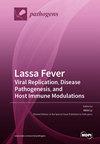Involvement of MicroRNAs in the Hypersensitive Response of Capsicum Plants to the Capsicum Chlorosis Virus at Elevated Temperatures
IF 3.3
3区 医学
Q2 MICROBIOLOGY
引用次数: 0
Abstract
The orthotospovirus capsicum chlorosis virus (CaCV) is an important pathogen affecting capsicum plants. Elevated temperatures may affect disease progression and pose a potential challenge to capsicum production. To date, CaCV-resistant capsicum breeding lines have been established; however, the impact of an elevated temperature of 35 °C on this genetic resistance remains unexplored. Thus, this study aimed to investigate how high temperature (HT) influences the response of CaCV-resistant capsicum to the virus. Phenotypic analysis revealed a compromised resistance in capsicum plants grown at HT, with systemic necrotic spots appearing in 8 out of 14 CaCV-infected plants. Molecular analysis through next-generation sequencing identified 105 known and 83 novel microRNAs (miRNAs) in CaCV-resistant capsicum plants. Gene ontology revealed that phenylpropanoid and lignin metabolic processes, regulated by Can-miR408a and Can- miR397, are likely involved in elevated-temperature-mediated resistance-breaking responses. Additionally, real-time PCR validated an upregulation of Can-miR408a and Can-miR397 by CaCV infection at HT; however, only the Laccase 4 transcript, targeted by Can-miR397, showed a tendency of negative correlation with this miRNA. Overall, this study provides the first molecular insights into how elevated temperature affects CaCV resistance in capsicum plants and reveals the potential role of miRNA in temperature-sensitive tospovirus resistance.微RNA参与辣椒植物在高温下对辣椒萎黄病病毒的超敏反应
辣椒萎黄病病毒(CaCV)是影响辣椒植物的一种重要病原体。温度升高可能会影响病害的发展,并对辣椒生产构成潜在挑战。迄今为止,抗 CaCV 的辣椒育种品系已经建立,但 35 ℃ 的高温对这种遗传抗性的影响仍有待探索。因此,本研究旨在探讨高温(HT)如何影响抗 CaCV 辣椒对病毒的反应。表型分析表明,在高温条件下生长的辣椒植株抗性受损,14 株感染 CaCV 的植株中有 8 株出现了系统性坏死斑。通过新一代测序进行的分子分析在抗 CaCV 的辣椒植株中发现了 105 个已知的微 RNA 和 83 个新的微 RNA(miRNA)。基因本体论发现,由 Can-miR408a 和 Can- miR397 调控的苯丙酮和木质素代谢过程可能参与了温度升高介导的抗性破坏反应。此外,实时 PCR 验证了高温下 CaCV 感染对 Can-miR408a 和 Can-miR397 的上调作用;然而,只有 Can-miR397 针对的漆酶 4 转录本与该 miRNA 呈负相关趋势。总之,本研究首次从分子角度揭示了高温如何影响辣椒植株的 CaCV 抗性,并揭示了 miRNA 在温度敏感性辣椒病毒抗性中的潜在作用。
本文章由计算机程序翻译,如有差异,请以英文原文为准。
求助全文
约1分钟内获得全文
求助全文
来源期刊

Pathogens
Medicine-Immunology and Allergy
CiteScore
6.40
自引率
8.10%
发文量
1285
审稿时长
17.75 days
期刊介绍:
Pathogens (ISSN 2076-0817) publishes reviews, regular research papers and short notes on all aspects of pathogens and pathogen-host interactions. There is no restriction on the length of the papers. Our aim is to encourage scientists to publish their experimental and theoretical research in as much detail as possible. Full experimental and/or methodical details must be provided for research articles.
文献相关原料
| 公司名称 | 产品信息 | 采购帮参考价格 |
|---|
 求助内容:
求助内容: 应助结果提醒方式:
应助结果提醒方式:


